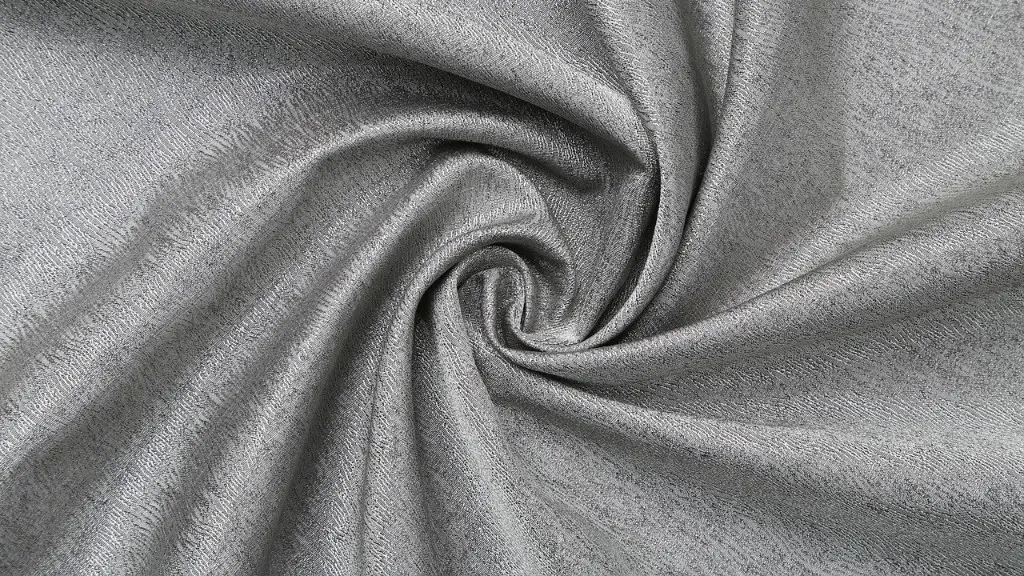The debate about whether or not it is acceptable to hang curtains up wet has been around for many years. Some people believe that it is fine to do so, while others believe that it is not. There are pros and cons to both sides of the argument. Some people believe that hanging curtains up wet is perfectly acceptable because it allows them to dry faster. Others believe that hanging curtains up wet is not acceptable because it can cause the fabric to shrink.
No, you cannot hang curtains up wet.
Can I hang my curtains back up to dry?
The best method to dry your drapes is to hang them outside, or to put them back on the rail and run a fan, leaving the windows wide open. Letting drapes hanging down will allow them to dry naturally and creases and folds to “fall out”.
Drying your curtains is an important step in keeping them fresh and free of mould or musty odours. If possible, line dry them on a dry, sunny day with a good breeze to get as much air around them as possible. This will help to keep them fresh and looking their best.
How do you air dry curtains
Once the panels are just damp and not sopping wet, hang them up to dry (do not put the curtains back on the window yet). Hang them over a drying rack or from a bathtub curtain rod. Do not hang them near a heat source or they may shrink or otherwise damage the fabric.
Crown molding is a beautiful addition to any room, and it can really make a space feel more finished and polished. If your room has crown molding, hang your curtain rod an inch or two below it. This will help to create the illusion of a taller window and make the space feel more open and airy. If your room doesn’t have crown molding, don’t worry! You can still create a beautiful and cohesive look by hanging your curtain rod as many inches above the window casing as it extends wide. For example, if your curtain rod extends 5 inches wider than the window casing, hang it 5 inches above the window casing. This will help to create the illusion of a wider window and make the space feel more open and inviting.
Why do curtains need to be dry cleaned?
If you have curtains made of linen, silk, or other sensitive fabrics, you will need to have them professionally dry cleaned. The hot water, detergent, and constant rubbing action in the washing machine can easily damage these fabrics, causing them to shrink or fade.
If you wash your curtains and they happen to shrink, don’t worry! This is especially common with natural yarns like cotton or linen. The shrinkage percentage is usually indicated on the fabric’s label. With synthetic fibers like polyester, the shrinkage percentage is usually smaller. These fabrics are more dimensionally stable.
Should you hang curtains wet or dry?
If your curtains are dripping wet, you should let them dry out or put them in the dryer for a bit. Wait until they’re slightly damp before hanging them back on the rods. The additional weight provided by the moisture in the fabric will cause them to straighten out and prevent shrinkage.
Hanging drapes right above the window frame can stunt the window and let in less light, which can give the entire space a crowded look. Keep in mind that, when open, your curtains shouldn’t fall more than 2 inches inside the frame on each side.
Are curtains dry clean only
If you’re not sure if your curtains are dry-clean-only, it’s always best to test the colorfastness in a hidden spot. To do this, blot a wet white washcloth on the fabric. If the color transfers to the cloth, then the curtains will need to be dry cleaned.
It is important to keep your curtains clean in order to maintain a healthy and fresh environment in your home. Depending on your family’s needs and where you live, the frequency of cleaning will differ. Hypoallergenic families should clean their curtains every 3-6 months, while those living in dusty areas or near the sea should clean theirs every 6-12 months.
Why do my curtains feel damp?
Mould and mildew can be a problem in any home, but are especially common in homes that have high levels of condensation. Condensation can be caused by a number of things, including cooking, drying clothes indoors and not ventilating your home properly. Mould and mildew thrives in warm, damp conditions, so it’s important to try and reduce the amount of condensation in your home. Some simple things you can do to reduce condensation are: open a window or door when cooking or showering, use an extractor fan, air out your home regularly and dry clothes outdoors or in a well-ventilated room. If you have a problem with mould and mildew, you can try cleaning it with a mixture of bleach and water.
Curtains naturally attract dust and absorb odors over time, so it is recommended to clean them every 3 to 6 months. Having your curtains cleaned on a regular basis is a good idea to keep your house fresh and clean.
Is it OK if curtains don’t touch the floor
Yes, you can leave a gap between the curtains and the floor. This may actually be the best option for modern window treatments. Interior designer Lisa Staton explains that keeping them 1/4″ off the floor keeps them long and generous, but not collecting dust.
Curtains shouldn’t just touch the floor, they should actually puddle on the floor for a more luxurious look. However, if you have pets or small children, you may want to hem your curtains so they don’t drag on the floor and get dirty.
Are curtains supposed to touch the floor?
There is no one right way to hang curtains. Some styles require more length to create a certain look, while others can be shorter. As long as the curtains enhance the beauty of your home, any length is fine.
If your curtains are starting to look a bit dusty, your dryer can help get them clean in no time. Simply take the curtains down and pop them in the dryer on a warm air and gentle tumble setting. The heat and movement will help to dislodge any dust particles, leaving your curtains looking fresh and new.
Warp Up
You can hang curtains up wet, but they will take longer to dry.
You can hang curtains up wet, but they will take longer to dry. If you are in a hurry, you can use a hairdryer on the cool setting to speed up the process.





